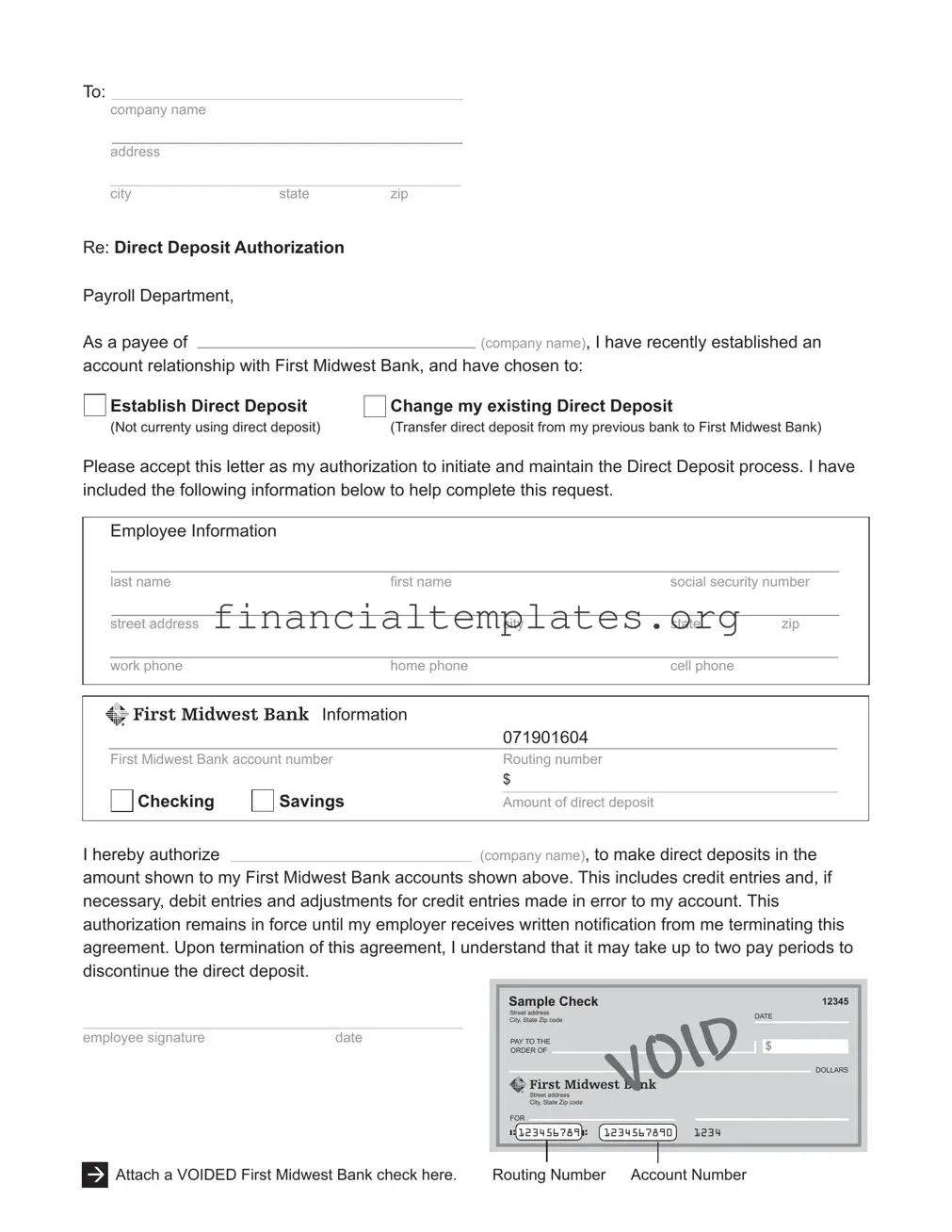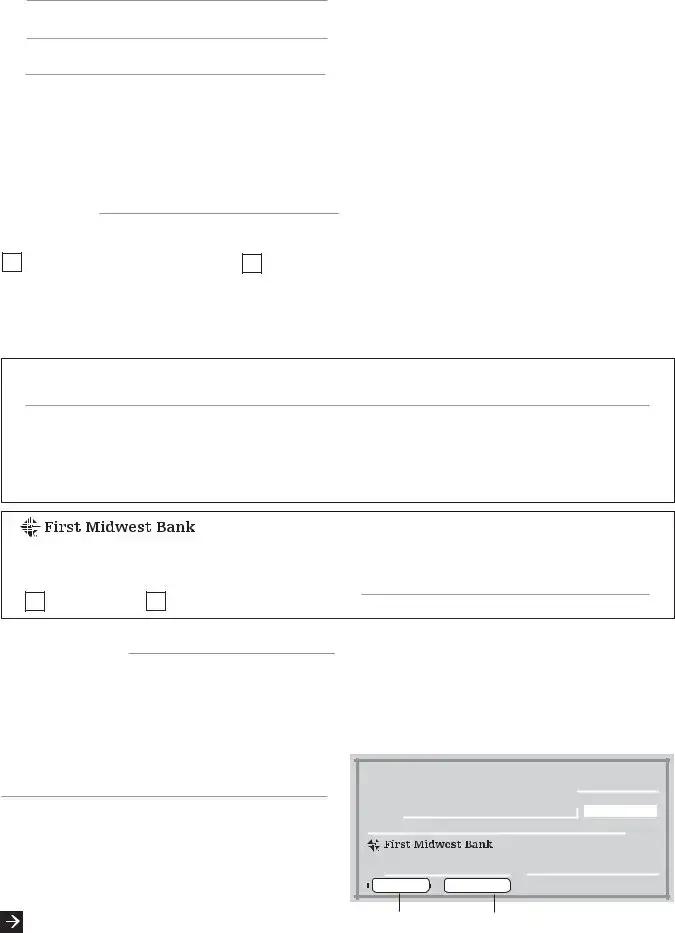The Automated Clearing House (ACH) Authorization Form is quite similar to the First Midwest Bank Direct Deposit form in its intent and structure. Both forms serve the purpose of authorizing electronic transfers of funds. The ACH Authorization Form is used not just for direct deposit of paychecks but also for automatic bill payments and other electronic payments. Like the First Midwest form, it requires the account holder's banking information, including the routing and account numbers, and a formal authorization to initiate and persist with the transactions specified.
A Payroll Direct Deposit Enrollment Form, commonly used by employers, shares a strong resemblance to the First Midwest Bank Direct Deposit form. This form allows employees to request direct deposit of their paychecks into their bank accounts. It typically asks for the employee's personal and banking information, similar to the First Midwest form, and also includes sections for routing and account numbers alongside authorization to deposit the employee's paycheck directly into the indicated account(s).
The Social Security Direct Deposit Form, while specific to Social Security benefits, parallels the First Midwest Bank Direct Deposit form in functionality and data requirements. It facilitates the direct deposit of Social Security benefits into a beneficiary's bank account. The form captures the beneficiary's personal details, banking information such as the routing and account numbers, and includes an authorization section for the beneficiary to sign-off on, similar to the process outlined in the First Midwest form.
The IRS Direct Pay Form, used for making payments to the Internal Revenue Service (IRS), also shares similarities with the First Midwest Bank Direct Deposit form, albeit for outgoing payments rather than incoming deposits. It requires taxpayers to provide their banking information to authorize an electronic payment from their bank account to the IRS. Like the First Midwest form, it involves entering account and routing numbers and an authorization by the account holder for a specific transaction.
Bank Account Change Notification Letters are similar to the section in the First Midwest Bank Direct Deposit form where the account holder is changing their direct deposit information. These letters are addressed to entities with which the account holder has a recurring financial relationship, informing them of changes in banking details. The letter includes new banking information and authorizes the recipient to update their records and direct future transactions to the new account, resembling the change request in the First Midwest form.
The Electronic Funds Transfer (EFT) Authorization form serves a broad purpose but aligns closely with the First Midwest Bank Direct Deposit form in its core function. It authorizes the transfer of funds between bank accounts electronically and can be used for a variety of transactions, including direct deposits, bill payments, and other transfers. This form collects the account holder's banking and personal information and includes an authorization similar to that of the First Midwest form for initiating and sustaining electronic transfers as specified.
Finally, the Voided Check Submission for Direct Deposit bears similarity to the instruction in the First Midwest Bank Direct Deposit form that requests attaching a voided check. While not a form per se, the act of submitting a voided check for banking transactions ensures the correct banking information is provided for electronic fund transfers. Like the First Midwest form, a voided check is used to verify the account and routing numbers, thereby facilitating the accurate processing of direct deposits or other automatic transactions.

